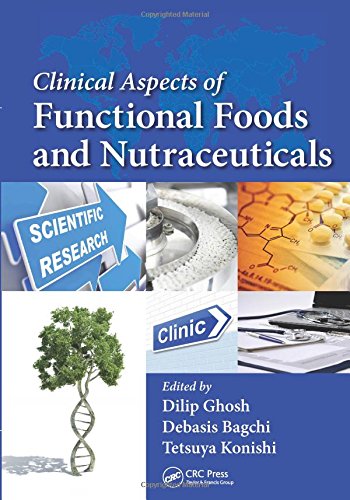

Most ebook files are in PDF format, so you can easily read them using various software such as Foxit Reader or directly on the Google Chrome browser.
Some ebook files are released by publishers in other formats such as .awz, .mobi, .epub, .fb2, etc. You may need to install specific software to read these formats on mobile/PC, such as Calibre.
Please read the tutorial at this link: https://ebookbell.com/faq
We offer FREE conversion to the popular formats you request; however, this may take some time. Therefore, right after payment, please email us, and we will try to provide the service as quickly as possible.
For some exceptional file formats or broken links (if any), please refrain from opening any disputes. Instead, email us first, and we will try to assist within a maximum of 6 hours.
EbookBell Team

4.3
78 reviewsIn the last three decades, revolutionary achievements have taken place in nutraceutical and functional food research including the introduction of a number of cutting-edge dietary supplements supported by human clinical trials and strong patents. Novel manufacturing technologies including unique extraction processes, bioavailability improvements through delivery technologies such as nanotechnology, and innovative packaging have been critical steps for their successful positioning in the marketplace and consumer acceptance worldwide.
Nonetheless, mixed messages have emerged from both the scientific community and the media concerning the potential benefits of foods and nutrients in the treatment and prevention of disease. This confusion, in addition to existing marketed products making questionable health claims, have led health practitioners and consumers to become skeptical about nutritional claims of new and emerging food products.
Clinical Aspects of Functional Foods and Nutraceuticals provides an extensive overview of the clinical aspects of functional foods and nutraceuticals. It contains information on both nutritional challenges and potential health benefits of functional foods and nutraceuticals. In addition to exploring the underpinning science, the book also focuses on food innovation, functional foods in human health, food–drug interactions, functional foods in medicine, the seed-to-clinic approach, global regulatory frameworks, challenges, and future directions.
The book provides an essential overview of the clinical aspects surrounding functional foods and nutraceuticals for key stakeholders, drawing links between areas of knowledge that are often isolated from each other. This form of knowledge integration will be essential for practice, especially for policy makers and administrators.